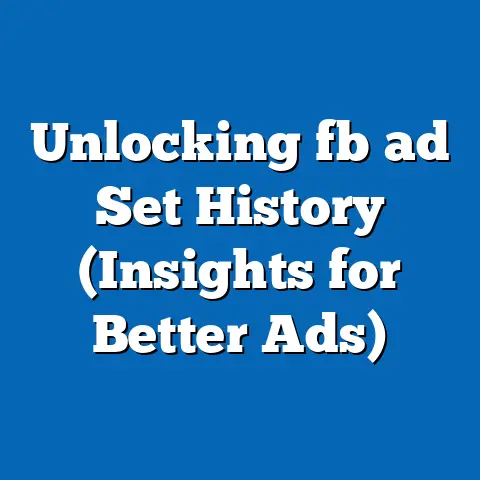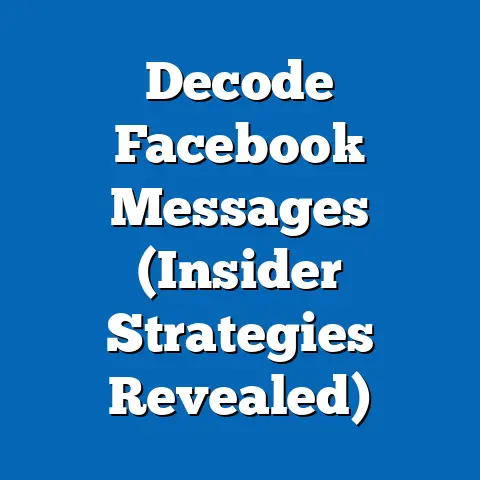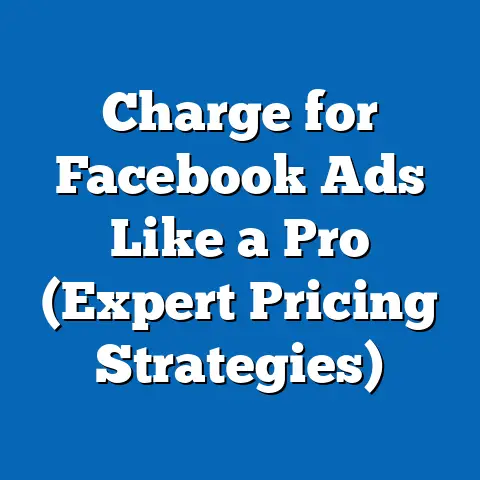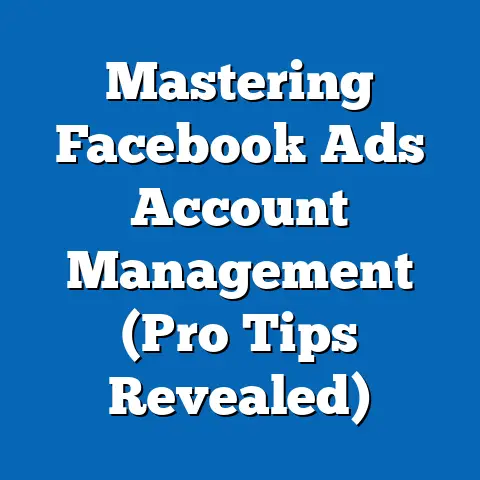Boost Conversions with This Facebook Ads Trick (Game-Changer)
Boost Conversions with This Facebook Ads Trick (Game-Changer): A Comprehensive Analysis
Introduction: Setting the Stage for Digital Advertising Innovation
In the ever-evolving landscape of digital marketing, businesses are constantly seeking innovative strategies to maximize their return on investment (ROI) and connect with their target audiences. Among the myriad of tools available, Facebook Ads remains a dominant platform due to its unparalleled reach, sophisticated targeting options, and ability to deliver measurable results. However, with increasing competition and evolving user behaviors, advertisers must adopt cutting-edge tactics to stand out.
This article explores a game-changing trick to boost conversions using Facebook Ads, diving deep into its mechanics, effectiveness, and broader implications for digital marketing. Before delving into the specifics of this strategy, we will first discuss the concept of “safety” in digital advertising—examining its defining characteristics, historical context, and societal implications. Safety in this context refers to creating a secure, trustworthy environment for both advertisers and consumers, ensuring ethical practices, data privacy, and transparency.
By grounding our analysis in the broader framework of safety, we aim to provide a holistic understanding of how innovative advertising tricks can align with responsible marketing principles. This comprehensive exploration will also cover the practical application of the Facebook Ads trick, supported by data-driven insights, historical trends in digital advertising, and expert perspectives. Finally, we will consider the future implications of such strategies in a rapidly changing digital ecosystem.
Section 1: Safety in Digital Advertising – Defining Characteristics, Historical Context, and Societal Implications
Defining Characteristics of Safety in Digital Advertising
Safety in digital advertising encompasses a range of principles designed to protect all stakeholders—advertisers, platforms, and consumers—from fraud, exploitation, and unethical practices. At its core, safety involves ensuring transparency in ad placements, safeguarding user data, and maintaining trust through authentic messaging. This includes compliance with regulations like the General Data Protection Regulation (GDPR) in Europe or the California Consumer Privacy Act (CCPA) in the United States, which prioritize user consent and data security.
Another key characteristic of safety is the prevention of ad fraud, such as click fraud or bot-driven impressions, which can inflate costs and distort campaign metrics. Platforms like Facebook have implemented advanced algorithms and verification processes to combat these issues, but the responsibility also lies with advertisers to monitor their campaigns vigilantly.
Lastly, safety extends to the content of advertisements themselves—ensuring they are not misleading, harmful, or offensive. This aspect is particularly crucial in maintaining consumer trust and avoiding reputational damage for brands.
Historical Context of Safety in Digital Advertising
The concept of safety in digital advertising has evolved alongside the growth of the internet and online marketing. In the early days of the internet during the late 1990s and early 2000s, digital ads were rudimentary—think banner ads with minimal targeting capabilities. During this period, there was little regulation or oversight, leading to rampant issues like spam ads, pop-ups, and unchecked data collection.
The dot-com bubble burst in 2000 exposed many vulnerabilities in the digital economy, prompting calls for greater accountability. By the mid-2000s, as platforms like Google and Facebook emerged as advertising giants, concerns over user privacy and data misuse began to surface. High-profile scandals, such as the 2018 Cambridge Analytica incident involving Facebook, highlighted the risks of unchecked data practices and sparked global conversations about digital safety.
In response, governments and regulatory bodies introduced stricter laws, while platforms implemented self-regulatory measures like ad transparency tools and user control over data sharing. These developments marked a shift toward a more ethical digital advertising ecosystem, though challenges persist as technology continues to outpace regulation.
Societal Implications of Safety in Digital Advertising
The societal implications of safety in digital advertising are profound, influencing trust, behavior, and economic dynamics. On one hand, a safer digital advertising environment fosters consumer confidence, encouraging engagement with brands and platforms. Studies show that 74% of consumers feel frustrated when content appears irrelevant or invasive, while 81% are more likely to trust brands that prioritize data privacy (Pew Research Center, 2020).
On the other hand, breaches in safety—such as data leaks or deceptive ads—can erode public trust, leading to broader skepticism toward technology. This has ripple effects on industries reliant on digital marketing, potentially stunting innovation and economic growth. For instance, after the Cambridge Analytica scandal, Facebook faced significant backlash, with millions of users opting out of data-sharing features or leaving the platform altogether.
Moreover, safety disparities can exacerbate digital divides. While tech-savvy users may know how to protect their data, less informed individuals—often from marginalized or older demographics—remain vulnerable to exploitation. This underscores the need for universal safety standards that prioritize inclusivity and education.
In the context of innovative strategies like the Facebook Ads trick we will discuss, safety serves as a guiding principle. Advertisers must balance the pursuit of conversions with ethical considerations, ensuring their tactics do not compromise user trust or platform integrity.
Section 2: The Evolution of Facebook Ads – A Brief History
The Rise of Facebook as an Advertising Powerhouse
Facebook launched its advertising platform in 2007 with “Flyers,” a rudimentary system allowing businesses to promote content to specific demographics. This was a revolutionary concept at the time, as it leveraged Facebook’s vast user data to enable precise targeting. Over the next decade, the platform evolved, introducing features like sponsored posts, carousel ads, and dynamic product ads.
By 2012, Facebook Ads had become a cornerstone of digital marketing, coinciding with the platform’s IPO and its push to monetize its growing user base. The introduction of the Facebook Pixel in 2013 allowed advertisers to track user behavior across websites, further refining targeting capabilities. Today, with over 2.9 billion monthly active users (Statista, 2023), Facebook remains a dominant force in advertising, generating billions in annual ad revenue.
Key Milestones and Challenges
The evolution of Facebook Ads has not been without challenges. Privacy concerns have repeatedly thrust the platform into the spotlight, prompting features like ad preference controls and transparency reports. Additionally, algorithm changes—such as the 2018 shift prioritizing “meaningful interactions” over brand content—have forced advertisers to adapt their strategies continuously.
Despite these hurdles, Facebook’s commitment to innovation has kept it at the forefront of digital advertising. Tools like Lookalike Audiences, Custom Audiences, and advanced machine learning algorithms have empowered advertisers to optimize campaigns for conversions, setting the stage for game-changing tricks like the one we will explore.
Section 3: Unveiling the Game-Changer – The Facebook Ads Trick to Boost Conversions
What Is This Trick?
The game-changing trick to boost conversions on Facebook Ads revolves around leveraging “micro-targeting with dynamic creative optimization (DCO).” In simple terms, this strategy involves creating highly personalized ad variations tailored to micro-segments of your audience, then using Facebook’s machine learning to dynamically serve the most effective creative to each user.
Here’s how it works: First, advertisers identify niche audience segments based on detailed demographics, interests, and behaviors using Facebook’s Audience Insights. Next, they develop multiple ad creatives—different headlines, images, and calls-to-action (CTAs)—for each segment. Finally, through DCO, Facebook’s algorithm tests these variations in real-time, optimizing delivery to maximize engagement and conversions.
This approach stands out because it moves beyond traditional A/B testing, which often requires manual adjustments and longer timelines. Instead, DCO automates the process, ensuring ads are continuously refined based on performance data.
Why It Works – The Data Behind the Strategy
The effectiveness of this trick lies in its alignment with consumer behavior trends. According to a 2022 Nielsen report, 64% of consumers expect personalized experiences from brands, and personalized ads can drive up to 40% higher click-through rates (CTRs). By combining micro-targeting with DCO, advertisers can deliver hyper-relevant content that resonates with individual users.
Moreover, Facebook’s algorithm prioritizes ads with high engagement, lowering cost-per-click (CPC) and improving ad placement. Case studies from companies like Airbnb and Shopify reveal that DCO campaigns can achieve up to a 50% increase in conversion rates compared to static ads (Facebook Business Case Studies, 2023). This data underscores the potential of this trick to transform campaign outcomes.
Step-by-Step Implementation Guide
-
Audience Segmentation: Use Facebook Audience Insights to identify micro-segments based on factors like age, location, interests, and purchase history. For example, a fitness brand might target “25-34-year-old women interested in yoga” as a distinct segment.
-
Creative Development: Create multiple ad variations for each segment. Include different visuals (e.g., images vs. videos), copy (e.g., emotional vs. direct messaging), and CTAs (e.g., “Shop Now” vs. “Learn More”).
-
Campaign Setup: Set up a campaign using Facebook’s Dynamic Creative feature in Ads Manager. Upload all creative assets and let the algorithm test combinations across your audience segments.
-
Optimization and Monitoring: Monitor performance metrics like CTR, conversion rate, and cost-per-acquisition (CPA) in real-time. Use Facebook’s reporting tools to identify winning combinations and scale them.
-
Iterate: Continuously refine your segments and creatives based on data insights. Test new variables to keep the campaign fresh and relevant.
Potential Pitfalls and Safety Considerations
While this trick offers immense potential, it is not without risks. Over-segmentation can lead to audience fatigue, where users see too many ads and disengage. Additionally, hyper-personalized ads may raise privacy concerns if users feel their data is being exploited. Advertisers must ensure transparency by clearly communicating how data is used and adhering to platform policies.
From a safety perspective, it’s critical to avoid misleading or manipulative messaging in ad creatives. Ethical advertising practices must remain a priority, even when pursuing aggressive conversion goals. Failure to do so can result in penalties from Facebook or long-term damage to brand reputation.
Section 4: Comparative Analysis – How This Trick Stands Out from Traditional Strategies
Traditional A/B Testing vs. Dynamic Creative Optimization
Traditional A/B testing involves creating two or more ad variations and manually analyzing which performs better over a set period. While effective, this method is time-consuming and may miss out on real-time optimization opportunities. In contrast, DCO automates testing and delivery, adapting to user behavior instantaneously.
For instance, an A/B test might reveal that a specific image outperforms another after a week of data collection. With DCO, the algorithm identifies this trend within hours and shifts budget allocation accordingly, maximizing efficiency.
Broad Targeting vs. Micro-Targeting
Broad targeting casts a wide net, aiming to reach as many users as possible with a generic message. While this can increase brand awareness, it often results in lower conversion rates due to lack of relevance. Micro-targeting, as used in this trick, prioritizes relevance over reach, delivering tailored content to smaller, highly engaged groups.
Data from eMarketer (2023) shows that micro-targeted campaigns achieve 30% higher engagement rates compared to broad campaigns. This highlights the value of precision in today’s saturated ad landscape.
Balancing Innovation with Ethical Boundaries
Unlike some aggressive tactics that push the limits of platform rules (e.g., cloaking or misleading claims), this trick operates within Facebook’s guidelines. It leverages built-in tools like DCO and Audience Insights, ensuring compliance while driving results. This balance of innovation and ethics sets it apart from riskier strategies that may yield short-term gains but invite long-term consequences.
Section 5: Broader Implications for Digital Marketing and Society
Impact on the Advertising Industry
The adoption of strategies like micro-targeting with DCO signals a broader shift toward automation and personalization in digital marketing. As machine learning capabilities grow, we can expect even more sophisticated tools to emerge, further blurring the line between manual and algorithmic campaign management. This raises questions about the future role of human marketers—will creativity remain a competitive edge, or will algorithms dominate?
For small and medium-sized businesses (SMBs), this trick levels the playing field by offering access to advanced optimization without requiring large budgets or technical expertise. However, it also intensifies competition, as more advertisers adopt similar tactics, potentially driving up ad costs in niche segments.
Workplace and Skillset Evolution
The rise of automated advertising tools necessitates new skillsets in the workplace. Marketers must become proficient in data analysis, audience segmentation, and creative strategy to fully harness tools like DCO. Training programs and certifications in digital advertising are becoming essential, reflecting a generational shift in professional development.
Younger generations, such as Gen Z, who are digital natives, may adapt more quickly to these changes compared to older professionals. However, this also highlights the need for inclusive upskilling initiatives to ensure no demographic is left behind in the digital transformation.
Cultural and Societal Shifts
Culturally, the trend toward hyper-personalization reflects a societal demand for relevance and authenticity. Consumers, particularly Millennials and Gen Z, value brands that understand their unique needs and preferences. A 2021 Deloitte study found that 60% of younger consumers are willing to share data if it results in personalized experiences, provided safety measures are in place.
However, this also raises ethical dilemmas about the boundaries of personalization. As ads become more tailored, they risk crossing into intrusive territory, potentially fueling debates about surveillance capitalism. Society must grapple with finding a balance between innovation and privacy, a challenge that will shape the future of digital advertising.
Economic Considerations
Economically, strategies that boost conversions can drive significant revenue growth for businesses, contributing to broader economic vitality. Facebook Ads alone generated $114 billion in revenue in 2022 (Statista, 2023), underscoring the scale of digital advertising’s impact. However, disparities in access to advanced tools and data literacy could widen economic gaps between large corporations and smaller players.
Additionally, as platforms like Facebook prioritize paid advertising over organic reach, businesses may face increasing costs to maintain visibility. This could disproportionately affect industries with tight margins, necessitating cost-effective tricks like the one discussed.
Section 6: Forward-Looking Insights – The Future of Facebook Ads and Digital Advertising
Emerging Trends and Technologies
Looking ahead, the future of Facebook Ads will likely be shaped by advancements in artificial intelligence (AI) and augmented reality (AR). AI-driven tools could further enhance DCO, predicting user behavior with even greater accuracy. Meanwhile, AR ads—already being tested in formats like Instagram filters—could create immersive experiences that drive conversions.
Privacy regulations will also play a pivotal role. With Apple’s App Tracking Transparency (ATT) framework and Google’s phasing out of third-party cookies, platforms like Facebook may face challenges in data collection. Advertisers will need to pivot toward first-party data and contextual targeting, adapting tricks like micro-targeting to comply with new norms.
Uncertainties and Challenges
Despite the promise of innovation, uncertainties remain. Regulatory landscapes are unpredictable, with potential for stricter laws that could limit targeting capabilities. Additionally, user fatigue and ad-blocking technologies pose ongoing threats to ad effectiveness, requiring continuous adaptation.
The societal push for digital safety will also intensify, challenging advertisers to prioritize ethics over short-term gains. How platforms and brands navigate these tensions will determine the sustainability of strategies like the one discussed.
Opportunities for Growth
On the positive side, the democratization of tools like DCO offers opportunities for growth across industries. As more businesses adopt data-driven advertising, we can expect a surge in creativity and experimentation, driving innovation in ad formats and messaging. Collaborations between platforms, regulators, and advertisers could also foster a safer, more transparent digital ecosystem.
For generational dynamics, younger cohorts entering the workforce and consumer market will bring fresh perspectives on personalization and technology. Their influence could accelerate the adoption of ethical advertising practices, aligning with broader societal values.
Conclusion: Balancing Innovation with Responsibility
The game-changing Facebook Ads trick of micro-targeting with dynamic creative optimization represents a powerful tool for boosting conversions in an increasingly competitive digital landscape. By delivering hyper-relevant content to niche audience segments, this strategy aligns with consumer demands for personalization while leveraging cutting-edge technology for efficiency. Data from case studies and industry reports confirms its potential to transform campaign outcomes, offering up to 50% higher conversion rates compared to traditional methods.
However, its success hinges on a commitment to safety and ethics. As discussed in the opening section, safety in digital advertising—rooted in transparency, data privacy, and trust—is not just a regulatory requirement but a societal imperative. Advertisers must navigate the fine line between innovation and intrusion, ensuring their tactics do not compromise user trust or platform integrity.
Looking forward, the future of digital advertising will be shaped by technological advancements, regulatory shifts, and evolving consumer expectations. While uncertainties persist, the opportunity to create a more personalized, ethical, and inclusive ad ecosystem is within reach. By embracing strategies like the one explored here, while grounding them in principles of safety, marketers can drive conversions and contribute to a digital world that benefits all stakeholders.
This analysis serves as a call to action for advertisers to innovate responsibly, keeping generational and societal dynamics in mind. As we move into an era of unprecedented digital transformation, the balance between creativity and accountability will define the legacy of modern advertising.






